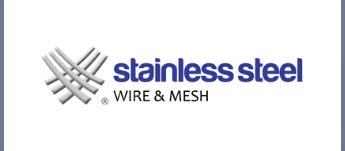The Lasting Decision
THE LASTING DECISION
At SSWM we coined the term ‘The Lasting Decision’ to sum up your choice to use our products. Whether you’re an architect, specifier, engineer, builder or manufacturer, your choice will be ‘The Lasting Decision’. An important attribute of stainless steel is its ability to provide long term performance with minimal maintenance, please refer to our CARE page for further information.
Taking into account its full life cycle, stainless steel has one of the lightest impacts on the environment of all engineering materials:
- Low carbon emission footprint- due to low maintenance costs and long life
- Not harmful to handle during manufacture, usage, recycling nor disposal
- High recyclable content
- High recapture rates
At SSWM we provide technical solutions to industry problems. The use of stainless steel is the solution to many of the industry problems that we see. Do the following problems sound familiar? All too often we hear these problems and it is satisfying that we have the solution!
- Corrosion resulting in product not meeting specification
- Replacement costs of products that don’t “pass” specification
- Aging of material being unsightly
- Protective coatings are expensive and don’t last for ever and may not provide 100% protection
WHAT IS STAINLESS STEEL?
Stainless steel is a generic term for a family of corrosion resistant alloy steels containing 10.5% or more of chromium.
All stainless steels have a high resistance to corrosion. This resistance to attack is due to the naturally occurring chromium-rich oxide film formed on the surface of the steel. Although extremely thin, this invisible, inert film is tightly adherent to the metal and extremely protective in a wide range of corrosive scenarios. This film is rapidly self-repairing in the presence of oxygen, damage by abrasion, cutting or machining.
For further information refer to ASSDA
www.assda.asn.au/stainless-steel/what-is-stainless-steel
WHAT ARE THE BENEFITS OF STAINLESS STEEL?
Corrosion resistance
Stainless steel has a high resistance to corrosion
High and low temperature resistance
Some grades will resist scaling and retain strength at high temperatures
Fire resistance
Stainless steel is non combustible
Ease of fabrication
Stainless steel can generally be cut, welded, formed and fabricated readily to produce a huge range of items- from filters to guards
Strength
The cold work hardening properties of 304 & 316 stainless steel (austenitic grades) result in the considerable strength of the material. Often this can allow reduced thickness to be used reducing weight and cost.
Aesthetic appeal
Stainless Steel requires minimal easy and simple maintenance resulting in a high quality, modern and attractive appearance
Hygienic properties
Stainless steel is easy and simple to clean which makes it the ideal choice for medical, food and pharmaceutical facilities
It can withstand frequent cleaning with chemicals and detergents that are utilized in the medical and food industries
Life cycle characteristics
Stainless steel is a durable, low maintenance material and is often the least expensive choice in a life cycle cost comparison.
STAINLESS STEEL & GALVANISED COMPARISON
Stainless steel has many advantages over galvanised.
| Stainless Steel | Galvanised |
| Alloy steels containing 10.5% or more chromium | Manufactured by dipping steel in molten zinc |
| Chromium rich self-repairing film | Like a paint job- can scratch |
| Corrosion resistant | Corrodes |
| Strong | Less durable |
| Initial cost & low maintenance cost | Initial cost & future replacement cost |
| Relatively easy and safe to weld and work with | Produce highly toxic fumes when welded or cut |
DURABILITY AND LIFE EXPECTANCY OF STAINLESS STEEL
We are often asked. What is the life expectancy of stainless steel? We can confidently say that it will last your lifetime.
Two papers provide some guidance about the durability and life expectancy of stainless steel.
The first study provided Gold Coast City Council with information on materials degradation and the justification to consider other materials such as stainless steel from a perspective of life cycle costing.
Whole of Life Cost Comparison and Cost Benefit Analysis for Steel Structures Constructed in the Foreshore zone. Final Report.
Carried out in Conjunction with Griffith University & Gold Coast City Council
Jordan Cocks 2009
A study undertaken at Kure Beach, North Carolina has shown the strength of stainless steel’s corrosion resistance. Specimens of grade 316 and 304 stainless steel were exposed for 15 years, situated 250m from the mean high tide mark. During this time the average corrosion in mm/year was less than 0.000025 for stainless steel (Housaka, 2001). This makes stainless steel almost 700 times more resistant to corrosion HDG steel (Cocks, 2009).
The LCC of stainless steel structures are comparable or less than mild steel structures:
- A HDG coating will cease to exist after 14 years
- Paint systems do not provide protection if the coating is damaged
- The only maintenance required for stainless steel is washing
- Stainless steel structures have an extremely long design life
Based on the cost/benefit analysis, stainless steel is a viable option for structures with a design life over 16 years for HDG steel, 11 years for painted steel and 23 years for duplex coated steel (Cocks, 2009).
Durability and life expectancy for stainless steel in external environments.
British Stainless Steel Association
The most important corrosion consideration with stainless steel is pitting. Micropitting is manifested as surface rust staining and is generally considered unacceptable for a material basically selected for its aesthetic appearance and corrosion resistance.
Factors affecting durability:
- stainless steel grade
- environment
- surface finish
Chloride ions are the most aggressive environmental hazard when assessing the pitting corrosion risk. Marine and coastal sites tend to be the most aggressive and so give the lowest projected durability.
Acid conditions, sometimes found in industrialised atmospheres, are also aggressive.
It is also important to consider the effects of local ‘micro climates’ that may influence how aggressive an environment is.
Estimated pit penetration times
The pitting life predictions shown in the table are based on a linear pit growth rate model.
| Location | Estimated Time to Penetrate 1mm (Years) by steel type | |
| 304 grade | 316 grade | |
| Marine | 145 | 260 |
| Semi-industrial | 135 | 525 |
| Rural | 770 | 1200 |
The marine and rural site samples had ‘mill’ finishes and the semi-industrial site results had dull polished finishes.
The 1mm-perforation times for the 304 type are consistent with the projected design lives of most buildings.
For further information refer to
https://www.bssa.org.uk/topics.php?article=51
LIFE CYCLE COSTING & STAINLESS STEEL WIRE & MESH?
An important attribute of stainless steel is its ability to provide long term performance with minimal maintenance. Whilst galvanised steel has a lower material cost than stainless steel, the cost of using galvanised steel, over the desired life of the product or system in which it is used, is considerably more.
When deciding whether or not to use stainless steel wire or mesh instead of galvanised steel equivalent, it is important to consider the life expected from the product. If you only need the wire or mesh to last say one year, then the lower cost material is probably a better choice. On the other hand, if you expect a life of 20 or 30 years, you should consider stainless steel.
Whilst it is easy to make an intuitive decision on the choice, how can we determine the exact life point at which stainless steel becomes the best choice? The answer is by calculating the Life Cycle Costing (LCC) of the various alternative materials.
How is Life Cycle Costing Calculated?
Using a complex formula which takes into account:
- Material cost
- Fabrication and installation costs
- Periodic maintenance costs
- Periodic replacement costs
- Cost of lost production or product usage
- Residual value at the end of service life
The lower the LCC, the lower is the true cost of using the material.
LCC has long been used in industries such as defence, airline, offshore oil and gas, railway and power generation and distribution.
The graph below is indicative of the variation of the total cost of using stainless steel and two lower cost alternative materials. The cost of stainless steel changes very little with time. The other two materials are initially cheaper but the costs rise over the years. The step changes are due to the replacement of the component.
Stainless steel life cycle costing graph and two other cheaper materials with step changes due to replacement costs (South African Stainless Steel Development Association)
The International Chromium Association has developed a PC program to calculate LCC and this is available from the Australian Stainless Steel Development Association (ASSDA).
Ask us about the many projects that we have been involved in where stainless steel wire & mesh have had the lower life cycle costing!
SUSTAINABILITY AND STAINLESS STEEL WIRE & MESH?
Sustainable and sustainability are terms that we hear every day, in fact, we are bombarded with them. Just about every product on the market has the “sustainable” tag, because marketers know that consumers want “sustainable” products.
But what is “sustainable? We’re sure everyone thinks they know, but they may struggle to actually define it. We like the LandLearn NSW definition – “taking what we need to live now, without jeopardising the potential for people in the future to meet their needs”.
Sustainable materials:
- have a low carbon emission footprint – stainless steel has low maintenance costs and long life, both of which are major contributors to a low carbon footprint
- are not harmful to the people who handle it, or to the environment, during manufacture, use, recycling and disposal
- are corrosion resistant and durable – if the correct stainless steel is used and properly maintained, it will last the life of the project. Stainless steel naturally forms a passive surface layer due to its chromium content, ensuring that it remains inert, posing no risk to people or the environment
- have high recycled content – stainless steel is 100% recyclable into new stainless steel, with no reduction in quality. Disposal of end-of-life stainless steel therefore poses no environmental problems. The average recycle content of 300 series stainless steels used in the building and construction industries is about 80%
- have high recapture rates – because it has high scrap value, no incentives are needed to encourage the collection and recycling of stainless steel. A recent international study by the International Stainless Steel Forum (ISSF) determined that about 92% of stainless steel used in the building and construction industries is recycled.
Taking into account its full life cycle, stainless steel has one of the lightest impacts on the environment, of all engineering materials.
For more information about stainless steel and sustainability, please visit www.sustainablestainless.org.

